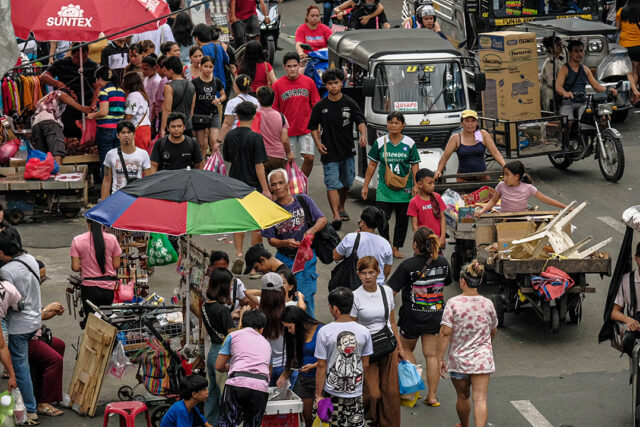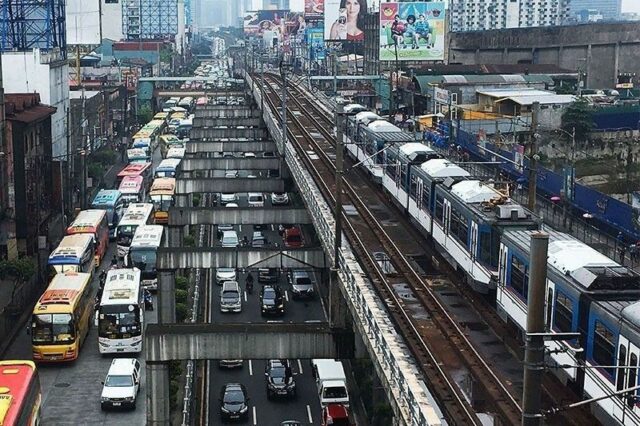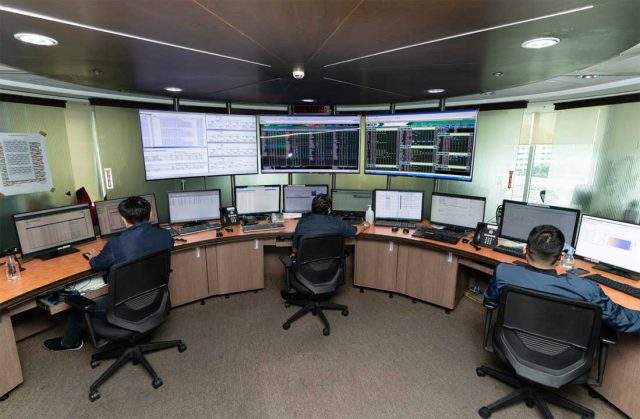‘No new taxes’ stance likely to hamper fiscal consolidation progress
THE PHILIPPINE government must consider passing “politically acceptable” tax measures, such as those related to wealth, luxury goods, and carbon emissions, if it wants to achieve its fiscal consolidation goals.
“The Marcos administration’s pledge to introduce ‘no new taxes’ has made things much worse from the standpoint of fiscal consolidation, especially with economic growth coming in much weaker than expected in the recent period,” Pantheon Macroeconomics Chief Emerging Asia Economist Miguel Chanco said in an e-mail.
Slower gross domestic product (GDP) growth is a risk to the government’s fiscal consolidation plan as it affects revenue collections, he said. This would also affect the administration’s goal to bring down both the deficit-to-GDP and debt-to-GDP ratios.
 “From my perspective, there’s certainly a need to question the fundamental position to not introduce new taxes,” Mr. Chanco said.
“From my perspective, there’s certainly a need to question the fundamental position to not introduce new taxes,” Mr. Chanco said.
Finance Secretary Ralph G. Recto has so far remained firm on his “no new taxes” stance, with the administration only pursuing reform measures pending in Congress and looking to improve tax collection efficiency.
“For now, we are interested in passing all our pending revenue measures in Congress including tweaked, enhanced Passive Income and Financial Intermediary Taxation Act (PIFITA) and the Capital Markets Efficiency Promotion Act substitute bills,” Mr. Recto said in a Viber message.
Other Department of Finance (DoF)-backed bills yet to be passed by lawmakers include the excise tax on single-use plastics, the rationalization of the mining fiscal regime, and the proposed hike to the motor vehicle road user’s charge.
John Paolo R. Rivera, a senior research fellow at the Philippine Institute for Development Studies, said the government’s “no new taxes” stance, while meant to ease consumers’ financial burden amid elevated inflation post-pandemic, limits the government’s ability to bridge the fiscal gap.
“As debt servicing increases and infrastructure spending remains a priority, sustaining this stance may become untenable beyond 2025, especially if growth slows,” Mr. Rivera said in a Viber message.
The Development Budget Coordination Committee (DBCC) in December said that through its medium-term fiscal framework (MTFF), it aims to reduce the budget deficit “in a more gradual and realistic manner, while also bolstering long-term investments that create more jobs, increase incomes, and decrease poverty incidence.”
The National Government’s budget deficit was capped at 5.7% of GDP in 2024. This is expected to go down to 5.3% of GDP in 2025, 4.7% in 2026, 4.1% in 2027 and to 3.7% by 2028, when the Marcos administration’s term ends.
Meanwhile, it aims to collect P4.383 trillion in revenues in 2024, P4.644 trillion in 2025, P5.063 trillion for 2026, P5.627 trillion for 2027, and P6.249 trillion for 2028.
The government set a 6%-6.5% GDP growth target for 2024. The DBCC in December widened its growth assumption for 2025 to 2028 to 6%-8% to account for domestic and global uncertainties.
Mr. Chanco said the budget deficit may have ended at 6% of GDP in 2024 and narrow only to 5.5% and 5% in 2025 and 2026, respectively, as revenue growth is unlikely to outpace the increase in spending as the government continues to invest in its priority areas to boost economic growth.
According to the latest “Revenue Statistics in Asia and the Pacific” report published by the Organisation for Economic Co-operation and Development (OECD), the Philippines’ tax-to-GDP ratio averaged 19.3%, far below the 34% average of wealthy countries that are part of the OECD.
Multilateral and developmental institutions have said that the Philippines needs to widen its tax base to ensure sustainable growth.
“Mobilizing domestic revenues remains essential for successful fiscal consolidation and to sustainably finance the country’s inclusive development agenda. Reaching fiscal targets and sustainably financing the government’s inclusive growth agenda rely on a permanent increase in tax revenues. Despite tax reforms in previous years, tax revenue growth is expected to remain modest,” the World Bank said in a June 2024 report.
“Additional revenue efforts could focus on broadening the tax base for consumption and personal income taxes, rationalizing tax incentives, and strengthening tax administration. An inability to generate additional revenues could lead to further reductions in public expenditure, or an increase in borrowing which could lead to higher debt.”
For its part, the ASEAN+3 Macroeconomic Research Office said in a December report that it would be prudent for the government to “quicken the pace of fiscal consolidation if conditions allow, as restoring fiscal space remains critical to build greater resilience to external shocks amid elevated uncertainty.”
‘POLITICALLY ACCEPTABLE’ TAXES
However, pushing for new tax measures could face backlash as consumers continue to grapple with high cost of living.
“In current context, we need taxes that are politically acceptable or popular and at the same time, can generate significant revenues,” Filomeno S. Sta. Ana III, cofounder and coordinator of the Action for Economic Reforms, said in a Viber message.
Policy makers could consider imposing excise taxes on single-use plastics, mining activities, and carbon emissions, he said.
It could also increase “sin taxes” on alcoholic beverages and tobacco products, Mr. Sta. Ana said.
These measures would not only generate revenue but also support environmental goals and promote public health, Mr. Rivera said.
“Progressive taxes” that have long been pending in Congress, such as those on wealth and luxury goods, are “politically viable” sources of revenue, he added.
“These wealth and luxury taxes should target high-income earners and nonessential consumption to ensure fairness and avoid taxes that overly burden middle-class families or discourage productive investments,” Mr. Rivera said.
He said external and domestic headwinds could put both the government’s fiscal and growth targets at risk.
“Structural inefficiencies in revenue collection and dependence on specific sectors call for revisiting measures to ensure resilience.”
Albay Rep. Jose Ma. Clemente S. Salceda, who heads the House Ways and Means Committee, said he “personally does not subscribe to the idea of ‘no new taxes.’”
Mr. Salceda said they are studying proposals to tax luxury goods and impose higher levies on “sin” products as well as the “harmonization” of vape taxes.
He also noted the need to pass the bill increasing the motor vehicle user’s tax. The measure was approved by the House in December 2023, but a counterpart measure has yet to be filed in the Senate.
For next year, the committee is also looking to “retire outdated and old taxes like DSTs (documentary stamp taxes) on dozens of government transactions,” Mr. Salceda said.
“Getting them replaced with new appropriate taxes is part and parcel of managing an evolving economy,” he added.
LEAKAGES
Similar to the government’s stance, Benedicta Du-Baladad, founding partner and chief executive officer of law firm Du-Baladad and Associates, said revenue collection efficiency must be improved before any new taxes are proposed.
She acknowledged that pursuing revenue reforms while wanting to encourage foreign investments and ramp up government spending is “like walking on a tightrope.”
“I think the National Government should first close all tax leakages before it imposes new taxes. According to the ADB, our tax collection performance is ‘below potential,’” she said in an e-mail. “Also, the leakages on the expenditure side must be plugged first.”
The government should also prioritize improving the implementation of revenue-generating measures, she added.
“Effective implementation should always be among the top considerations. Effective implementation should also mean effective coordination between the various government agencies involved in these tax measures.”
Ms. Du-Baladad said a key measure that should be fast-tracked is the PIFITA, which completes the Comprehensive Tax Reform Program crafted in 2018 to ensure a more equitable and efficient tax system.
“This is an important component to be addressed to promote capital markets. I believe PIFITA has the capability to help with fiscal consolidation because PIFITA has the potential to improve the state of the capital markets. Improving it would mean that business would have access to additional sources of capital which may be used to grow their businesses,” she said.
“Growing the business tends to lead to greater income which would translate to higher tax collection. The higher the tax collection is, the better it is for the government’s fiscal consolidation efforts.” — Beatriz Marie D. Cruz












